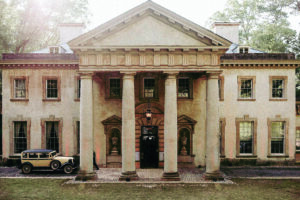
From Swan House to the White House: The Two Legacies of a Buckhead Home
The Swan House, with its soaring columns and manicured gardens, stands as an iconic symbol of Buckhead’s elegance and Southern grandeur. For decades, it has
Home / The History of Buckhead
The history of Buckhead dates back to the time when the area was first occupied by the Cherokee and Creek Indian tribes. The area was later occupied by Andrew Jackson’s military and in December 18, as John Ottley describes in his book Atlanta History for Cocktail Parties, “202.5 acres (then in DeKalb County) was deeded to Henry Irby on December for $650.00.” And although, “Mr. Irby was a small man and wore a No. 6 boy’s shoe, Mr. Irby left a huge footprint on the history of Atlanta.”
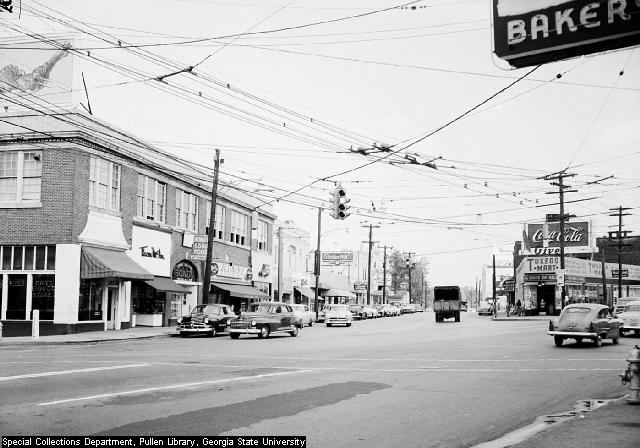
Shortly after his shockingly inexpensive purchase, Irby built a tavern and grocery store near the intersection of what is now Peachtree Road and Paces Ferry. The area was called Irbyville, and the tavern grew to become a welcoming stopping place for many locals and travelers, just passing through. Legend has it that Irby at some point in the early years of his ownership, killed a buck and hung its head from a post for all to see and soon enough, people starting referring to this meeting place as “the buck’s head” instead of Irbyville. Irby maintained his ownership of Buckhead until he died in 1879.
Although no longer an uninhabited wilderness, Buckhead was only lightly populated for much of the 20th century. The area started out as a prime place for summer and country homes for some of Atlanta’s wealthiest. From the beginning, these estates were built on beautiful wooded lots, far removed from the road. Over the years, as Buckhead transformed from just seasonal residences to a year round community, the many neighborhoods were subdivided and established, and many more homes were built.
Buckhead was annexed to the city of Atlanta in 1952. The area has grown and transformed dramatically, since. Many of the large estates were sold off, allowing for some of the most famous and prestigious commercial development in the southeastern portion of the United States. Today, Buckhead real estate development milestones include Lenox Square built in 1959, which is the largest shopping center in the southeast. Phipps Plaza, another luxurious shopping center built soon after Lenox. In 1974, Tower Place was built and paved the way for future high-rises in Buckhead. Then in 1984, the flagship Ritz Carlton was built, which helped lead the Buckhead community further in deluxe accommodations and luxury.
In recent years, the Peachtree Road corridor (Buckhead Village) has been given special attention by Buckhead commercial planners and developers. As a result of much planning, this area is home to some of the best shopping, dining and entertainment in Atlanta, and all of the southeastern United States. Buckhead has been called the “Beverly Hills of Atlanta”, and it’s not hard to see why. Due to its history, magnificent homes, landscaping, location, luxury, shopping and amenities, a home in Buckhead today, is a home in the most prestigious and wealthiest area in Atlanta.

The Swan House, with its soaring columns and manicured gardens, stands as an iconic symbol of Buckhead’s elegance and Southern grandeur. For decades, it has

The Atlanta History Center’s Sheffield Hale calls the Buckhead museum’s newest exhibition “a game-changer.” The center opened a new exhibit on January 12 in its
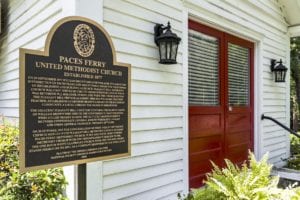
Paces Ferry United Methodist Church has been an integral part of the Paces neighborhood in Buckhead for 147 Years. Earlier this year, news of the
A rare and expansive 11.7-acre property in the heart of Buckhead is set to come to market, marking its first availability in a century. Located
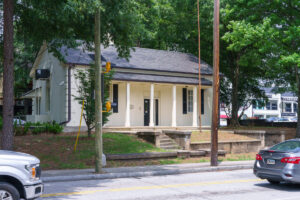
The Lodge, an over 110-year-old house-like structure at Peachtree Battle Avenue and Peachtree Road, played a key role in Buckhead’s past. Now the question is
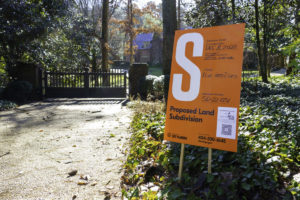
Buckhead’s Tuxedo Park has long sought to draw a line in the sand against subdividing lots in the neighborhood. But a local developer is trying